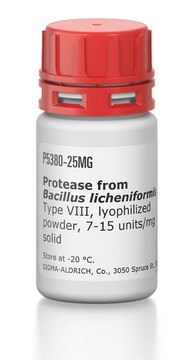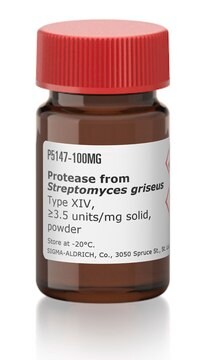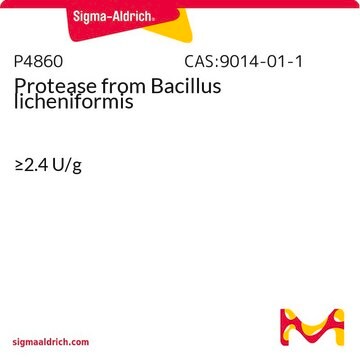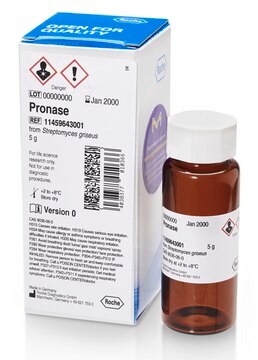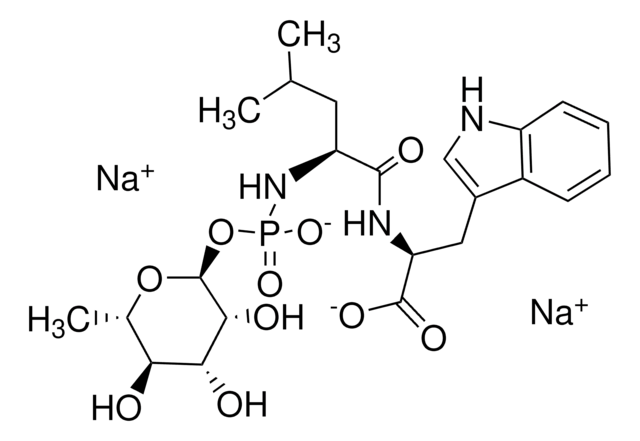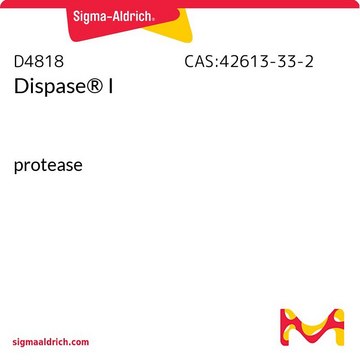Key Documents
P1512
Thermolysin from Geobacillus stearothermophilus
Type X, lyophilized powder, 30-350 units/mg protein (E1%/280)
Synonim(y):
Protease from Geobacillus stearothermophilus, Thermophilic-bacterial protease
About This Item
Polecane produkty
pochodzenie biologiczne
Geobacillus stearothermophilus
Poziom jakości
typ
Type X
Postać
lyophilized powder
aktywność właściwa
30-350 units/mg protein (E1%/280)
masa cząsteczkowa
34.6 kDa by amino acid sequence
oczyszczone przez
crystallization
Warunki transportu
wet ice
temp. przechowywania
−20°C
Opis ogólny
Zastosowanie
Jakość
Definicja jednostki
Postać fizyczna
Uwaga dotycząca przygotowania
Hasło ostrzegawcze
Danger
Zwroty wskazujące rodzaj zagrożenia
Zwroty wskazujące środki ostrożności
Klasyfikacja zagrożeń
Resp. Sens. 1
Kod klasy składowania
11 - Combustible Solids
Klasa zagrożenia wodnego (WGK)
WGK 3
Temperatura zapłonu (°F)
Not applicable
Temperatura zapłonu (°C)
Not applicable
Środki ochrony indywidualnej
dust mask type N95 (US), Eyeshields, Faceshields, Gloves
Certyfikaty analizy (CoA)
Poszukaj Certyfikaty analizy (CoA), wpisując numer partii/serii produktów. Numery serii i partii można znaleźć na etykiecie produktu po słowach „seria” lub „partia”.
Masz już ten produkt?
Dokumenty związane z niedawno zakupionymi produktami zostały zamieszczone w Bibliotece dokumentów.
Klienci oglądali również te produkty
Protokoły
To standardize a procedure for the enzymatic assay of Protease using Casein as a substrate.
Nasz zespół naukowców ma doświadczenie we wszystkich obszarach badań, w tym w naukach przyrodniczych, materiałoznawstwie, syntezie chemicznej, chromatografii, analityce i wielu innych dziedzinach.
Skontaktuj się z zespołem ds. pomocy technicznej
